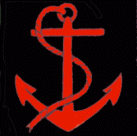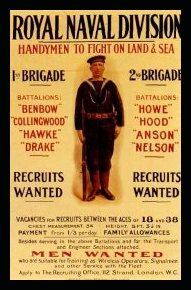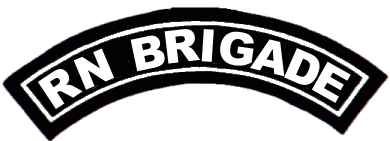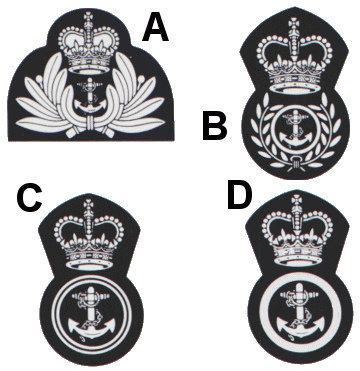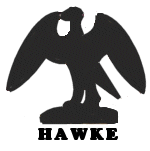|
The Royal Naval Brigade 2303AD
Introduction The Royal Naval Brigade is a force of sailors originally trained to protect the Royal Navy whilst ashore or in port. The overstretch of the British Army and its concentration on continental warfare and the specialisation of the Royal Marines has led to a need for a dedicated force in this role. Units of the RN Bde can be found scattered around the world garrisoning the Royal Navy’s bases and now providing ship's troops. In addition to this parts of the RN Bde are deployed to protect the Fleet Air Arm when it is deployed ashore. Acknowledgement Thanks to Peter Grining for feedback and pointers on the article. Narrative Able Seaman Fox snapped a fresh box of rounds to his red hot Vickers machine gun. So far the remnants of the platoon were keeping the Bugs clear of the route into the naval base. However the local New Africa Regiment troops and the militia had begun to slip away, some to the fighting elsewhere in Bayview, others to places of safety. Fox didn't begrudge them, he'd be doing the same in their place, but they still had to get the last vessels and their cargo clear of the base. Their elastic defence in the buildings along the land side of North Cape Road was holding well, helped no doubt by a liberal expenditure of thermobaric rockets. So far they'd been lucky, there had been no armour helping the Kafer infantry otherwise they'd have been over-run long ago. The company's small stock of Green Hunter anti-tank missiles had been appropriated by the army last week, and only a booby trapped torpedo warhead dug under the main gate could stop a Deathsled. If they had to use that it would take most of the company with them. One of the snipers out beyond the perimeter spotted the Kafers massing for another assault down a side street and the mortars on the quayside inside the base fired in their last rounds. It wasn't enough, they came en-masse, clearing the buildings as they came, headless of the casualties and swamping the defences. Fox fought clear of the burning shop and dropped behind a rubble barricade, sweeping fire across the street as the remnants of Fisher Company's outer defences fell back. Kafer tracked vehicles began to clank down the street. Then came respite as a patrol boat swept close into the shore on its way out of the base, blazing away with its close defence armaments and small arms fire from the matelots. The firefight lasted minutes before the patrol boat limped away with fire licking from below decks. Nevertheless it had bought time for the company to regroup for its final defence and for extra high tech weapons for HMS Unseen to be borne away to continue the fight. Extract from 'Token At Best'?: The
Defence of New Africa The Royal Naval Brigade traces its roots to the Royal Naval (later 63rd) Division of World War 1. It was created as an infantry division from surplus reserve sailors and Royal Marines by Winston Churchill in 1914. Its first action at Antwerp, half trained and under-equipped, was a debacle. However in subsequent actions at Gallipolli and on the Western Front the unit won a reputation as a fine fighting division, even winning the grudging respect of the Anzacs. It was disbanded at the end of the war. Below: World War 1 RN Division recruiting poster.
The Royal Naval Brigade was reincarnated during World War III when ship losses reached such levels that there were large numbers of surplus sailors. These were put to use securing port areas in the UK and proved a valuable resource after the nuclear exchanges in keeping much of the south of England under military and later HMG control. These units later helped in the pacification of the south-west. The Twilight Era RN Brigade reached a maximum strength of three battalions but by 2017 had shrunk to three companies. The RN Brigade stayed in being after the Twilight, providing security for bases in the UK as well as detachments for Diego Garcia and Hong Kong. It expanded with the Royal Navy as it became the worlds largest fleet in the 22nd century and as the Royal Marines began to complain of overstretch it began to take over some of the RM's roles. It later began to raise units in support of the RN off-world. The RN Brigade has maintained its current size of around 3000 sailors and officers for most of the last 60 years. There seems little likelihood that this will change in the near future, even with many of the brigade's units being deployed against the Kafers on the French Arm The RN Brigade recruits from civilians who elect to join the services, and also from serving sailors who transfer from other branches of the Senior Service. Service in the RN Brigade is on the same terms as enlistment in the other branches of the service. In common with the other services recruitment into the Royal Navy is open to British, Irish and Commonwealth citizens. Personnel choosing to join the RN Brigade are initial trained with other recruits at the various RN training depots. They then undertake the RN Brigade Course, lasting for some 16 weeks. The first 10 weeks are taken at the School of Infantry at Catterick, where they undergo the All Arms Infantry Course. They then move on to the Security School at Faslane on the Clyde. There they are instructed in the arts of defending establishments from infiltration or attack by members of the Royal Marines' Commachio Group. Those who then are selected for service in the light armoured Companies are sent to RAF Honnington in Suffolk. There they are trained alongside members of the RAF Regiment in the Field Squadron role. Watermanship training is stressed for those in other streams, especially the use of small boats both for boarding missions and patrolling the approaches to harbours. In addition some of the more experienced members of the Brigade are trained as divers, to help maintain the sub-surface security of port areas. Members of the RN Brigade, especially those in Hawke Company, have the opportunity to undertake Parachute and Commando training in the UK or other similar courses overseas or in the colonies. The RN Brigade rarely runs its own courses but has access to those run by all the services. The aim of the training is to produced well trained infantry soldiers with a specialisation in the defence of static targets. Or in the defence of forward deployed air squadrons. RN Brigade personnel serving with Naval Parties onboard RN warships are given extra training for this role. Below: RN Brigade flash as worn on dress uniforms. A subdued tactical version is used on combat fatigues.
Operations in the RN Brigade normally fall into three categories. The first is with the Defence Companies in protection of RN Bases, the second with Light Armoured Companies in protecting Fleet Air Arm squadrons operating ashore and the last is in providing manpower for Naval Parties. Defence companies are roled to protect on-shore assets of the Royal Navy. In this they are assisted by both the Royal Marines' Commachio Group (with specific responsibility for the vital submarine bases on the Clyde) and Ministry of Defence Guard Force. RN Brigade units have responsibility for all other bases and in protecting the routine movements of high value ordnance within the United Kingdom. In normal operations the RN Brigade will be responsible for providing an armed quick reaction force to back up civilian MoDGF personnel. However in times of tension RN Brigade presence will be stepped up and take the lead whilst RM Commachio Group elements will be brought in to support the RN Brigade. Defence companies are trained to counter intrusion by a range of threats from civilian protesters to the media, guerrillas to special forces all the way to a full conventional attack. Defence companies can also be forward deployed should the RN need to seize operating bases and defence companies would be brought in to secure these facilities in conjunction with the assault troops. Hawke Company has been specifically trained for this role and has nearly all its personnel commando trained on the Black Commando All Arms course. Generally however operations in defence companies are often quite dull (although sailors with families appreciate the stability of such a posting) and these units have been plagued with manpower retention problems. To make good this difficulty the RN has recently introduced a policy of cross posting to other branches of the Service. Additionally members of the defence companies are usually first in the queue to fill vacancies in Naval Parties. Additionally sailors in these units have plenty of access to RN facilities and many are key members of services sporting teams. The light armoured companies are generally found in the 3rd Battalion and with one company in the off-world 4th Battalion. These companies have the same general organisation and role as the RAF Regiment Field Squadrons. Namely in the protection of forward deployed air squadrons operating close to enemy ground units. These units train and operate closely with the RAF Regt especially since the advent of Joint Tactical Air Groups (JTAG) which see Fleet Air Arm and Strike Command aircraft operating alongside each other. Light armoured units are primarily concerned with ground defence of the squadrons but also are involved in provision of short range air defence. These formations are equipped with light AFV's that are air portable by either conventional or tilt-rotor aircraft. The last role the RN Brigade is involved in is the provision of personnel for Naval Parties deployed on RN warships and RFA auxiliaries. Originally this was entirely a Royal Marine role but when that Corps became involved in colonial defence it felt unable to provide enough manpower to an expanding fleet and the RN Brigade took on the role in the mid 22nd century. RN Brigade sailors with Naval Parties are routinely responsible for the defence of the ship in harbour, weapons and fitness training for the crew and in providing boarding parties for blockade or patrol duties. (These units are not special forces and other units are tasked for maritime counter-terrorism operations.) However boarding operations; during blockades, enforcing sanctions or upholding regulations are conducted with remarkable frequency. These can utilise the ship's air assets or RN Brigade manned small boats. Naval parties are also sometimes called upon to operate on-shore for a variety of reasons, from ceremonial, to humanitarian, to combat operations. Lastly diver trained personnel can supplement a ship's own divers. It should be noted that RN Brigade personnel often provide back-up for the Shore Patrol in many ports and are quite used to having to subdue drunken matelots. Consequently the RN Brigade are not always well liked by other parts of the Senior Service. Lastly the RN Brigade's companies are capable as acting as conventional infantrymen. They have been called upon to do this on occasions, usually supplementing the army on peace support operations. As befits an organisation skilled in point defence they often guard key points and high value units. For instance Churchill Company served with the peacekeepers on Vogelheim in 2297, originally to protect the HQ area but later it undertook its own patrolling and hearts and minds programme. The Brigade consists of twelve independent companies (named for RN heroes), organised for administrative purposes into four battalions. Neither battalions or the Brigade itself is a fighting organisation with company being the standard operating unit. The whole Brigade is commanded by a Commodore, RN, whilst the battalions are led by a Commander, RN. The 1st Bn is defence roled with responsibility for the RN's heartland on the south coast of England although one company is deployed in rotation to the Falklands. 2nd Bn is also defence roled and is based in Scotland although it provides companies for the defence of the RN's Far Eastern commitments. 3rd Bn has most of the light armoured companies and based at airbases in the South-West. 4th Bn is the HQ for the three independent companies deployed to the colonies, two of these companies are defence companies and Hood Company is light armoured. The companies are large formations of around 160 men, organised in six platoons. The company is commanded by a Lieutenant Commander RN, and his platoon commanders are Lieutenants or Sub-Lieutenants. The defence companies are equipped as light infantry and consist of three rifle platoons, a machine gun platoon, a light mortar platoon and a short range air-defence platoon. Normally the heavy weapons are stored until required by the turn of events. These companies are provided with an excellent array of sensor equipment, which due to the small size of the RN Brigade and separate RN procurement are normally more advanced than their Army equivalents. They also hold internal security and riot control gear in stores. Light armoured companies are equipped with the Hussar family of armoured fighting vehicles. They also have three rifle platoons, each with four Hussar APC. An anti-tank platoon has four Hussar AT variants, as well as a number of Green Hunter missiles for dismounted action. The air defence platoon also has four Hussar SAM carriers. 1st Battalion Plymouth, England
2nd Battalion Rosyth Naval Base, Scotland
3rd Battalion Plymouth, England
4th Battalion HMS Caledonia, New Africa
Although the RN has one of the smallest off-world profiles of any of the four services it does have many facilities that found themselves within the danger zone. The first element to come under fire was Fisher Company which was based on New Africa. The Company was first involved in disaster relief operations before being stood too for the defence of the colony. The company was dispersed around the colony with a Platoon tasked to defend a small stock of tactical nuclear weapons deployed with the New African Manoeuvre Force (a job they fulfilled excellently until the Liberation), a platoon was sent to establish and defend the RN's covert base at Everett on the north coast and the remains of the company was to defend the main base at Bayview. When the Kafer assault on Bayview occurred the company was involved in the defence of the city. Although only a battalion of New African Regiment regulars were present, they and recently raised guerrillas and irregulars took a heavy toll on the invaders. Fisher Company was badly mauled allowing the last of the bases' ordnance to be evacuated before the remnants slipped away by sea or through the burning city. The company then operated in defence of the northern base as well as on-board the experimental submarine HMS Unseen and with New African raiders from 9 Commando on operations in the north. Members of the unit also participated in the evacuation operations from French and German Continents. Churchill Company on Joi had its own test when that world was assaulted by the Kafers. They were attached to the Gurkha Brigade when that unit deployed to aid the Japanese and German colonies. Although normally tasked to defend the Brigade HQ (a job that resulted in several serious contacts) Churchill Company also undertook several patrolling missions. Later two of the company's platoons undertook riverine operations in Halbinsel with RN cutters brought up from New Cornwall. Lastly a platoon of volunteers from the company deployed to Crater to help man that colony's ACV Carriers in the 1st Dayside Campaign. As the British military build-up began at Beowulf JTAGs were moved up arm. Lewis and Cochrane Companies were included in the Defence Groups of JTAG-3 and 4 respectively. These were ultimately not to see action until they arrived at BCV and both companies have been kept busy in patrolling and humanitarian tasks since their arrival. Hawke Company has been moved up arm to replace the badly damaged Fisher Company, whilst Churchill has been reinforced with replacements.
Above: Various capbadges used depending on rank. A - Officers, B - Chief Petty Officers, C- Petty Officers and D - Other Rates. The RN Brigade is equipped with standard British Army equipment and weaponry. They can be distinguished by their RN berets and 'RN Brigade' flash worn on the shoulder, the RN Bde patch is normally worn on the left arm and on the right side of the helmet. It is not uncommon for individual company insignia to be worn on the left shoulder. Below: Template used by Hawke Company for vehicle markings. Based on capbadge of WW1 Hawke Battalion.
One quirk is the wearing of RN rank insignia on the left arm and equivalent army insignia on the right. This is supposedly due to the inability of other services to note the actual rank of RN Brigade personnel. At all times except for tactical exercises a white lanyard is worn around the left shoulder. Normal RN dress uniforms are worn when required. The naval cap is worn with a 'Royal Naval Brigade' tally. Members of the RN Brigade are Experienced or Veteran NPCs in the Sea Military. The RN Brigade is a military unit less likely to be caught up at the cutting edge of a conflict. Consequently PC's can be authentically be given a much greater range of actions than those serving in teeth arm units. Rank comparison table:
Copyright 2009, D Hebditch |

